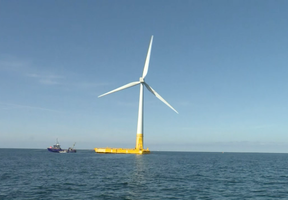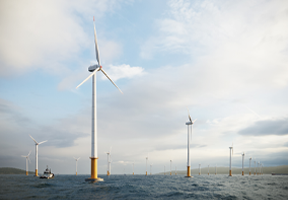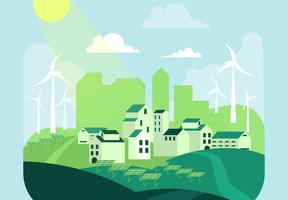The Rise of Renewable Energies in Europe
10 min read
The amount of produced in Europe tripled between 1990 and 2016, but the goals set by the European Union for 2020 have still not been reached. Here are a few tables illustrating the situation.

© Shutterstock - Europe has set itself ambitious targets for the development of renewable energies.
Wood Is the Most-Used Renewable Energy Source
According to E.U. statistics institute Eurostat, renewable energies represented 17.5% of energy consumption in Europe in 2017, compared with 8.5% in 2004.
The goal of 20% by 2020 may therefore be out of reach. For 2030, the target is 27%.
The following table presents the breakdown of renewable energy types and the change in their use1:

- Surprised? Wood (including forest waste) accounts for nearly half of renewable energy. It is essentially used to generate for individuals and urban heating networks. However, the growth of this energy source’s use is limited by forest surface area. (made from farming waste and sewage sludge), biofuels (oilseed and sugar crops) and renewable waste (organic matter) have also played a role in making the predominant source of renewable energy production.
- Hydropower has remained stable (and varies according to rainfall patterns): it is difficult to build new dams in Europe.
- Wind power has now surpassed hydropower. Wind also generates much more than solar photovoltaics, which nevertheless has seen the biggest increase.
Differences Between Countries
The proportion of renewable energy varies greatly according to country. The table below shows the situation of six countries in 2017, along with the target for 2020.

- France scored better than Germany. This is because France has a very high hydropower capacity and expanding forests. However, it is still far from reaching its target.
- Sweden surpassed the 50% mark, but was outperformed by two champions, both at more than 71%: Iceland (thanks to power) and Norway (thanks to hydropower).
- Poland, which uses a lot of , is far from being the lowest performer. It uses more renewable energy than Belgium, the Netherlands, Luxembourg and Malta, for example.
Source:



















